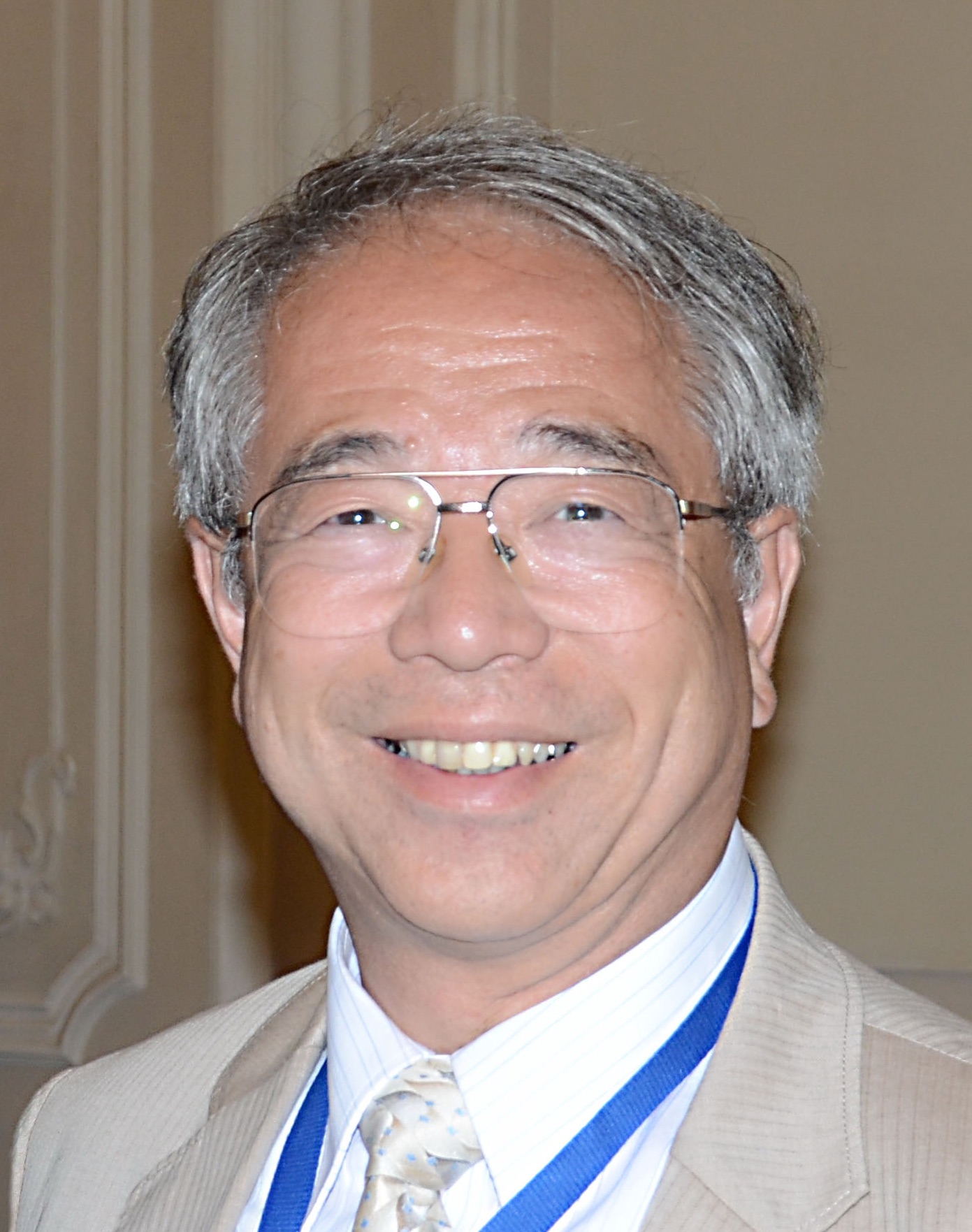Org. Synth. 2017, 94, 280-291
DOI: 10.15227/orgsyn.094.0280
Rhenium-Catalyzed ortho-Alkylation of Phenols
Submitted by Yoichiro Kuninobu,
1*
द Masaki Yamamoto,
‡ Mitsumi Nishi,
ठTomoyuki Yamamoto,
‡ Takashi Matsuki,
‡ Masahito Murai,
2*
‡ and Kazuhiko Takai
2*
‡ ‡
Checked by Austin C. Wright and Brian M. Stoltz
1. Procedure (Note 1)
A.
2-(1-Methylnonyl)phenol (1). An oven-dried 100-mL Schlenk flask equipped with a Teflon-coated magnetic stir bar (12.7 mm), and a reflux condenser with a three-way stopcock, which is purged with argon and connected to an argon/vacuum manifold (
Note 2), is charged with
Re2(CO)10 (488 mg, 0.750 mmol, 0.025 equiv) (
Note 3),
mesitylene (1.5 mL, 20 M) (
Note 4),
phenol (2.82 g, 30.0 mmol) (
Note 5), and
1-decene (8.5 mL, 45.0 mmol, 1.5 equiv) (
Note 6) (Figure 1). The resulting white suspension (Figure 2a) is heated in a silicon oil bath at 160 °C for 48 h under argon atmosphere (
Note 7). The white suspension gradually converts to a colorless solution, and then changes to a light brown suspension (Figure 2b). The resulting mixture is allowed to cool to ambient temperature, and the solvent is removed by rotary evaporation (40 °C, 60 mmHg). The black colored residue is purified by Kugelrohr distillation (Figure 3). Slow gradient of air bath temperature from room temperature is applied at 15 mmHg. An early fraction is collected (air bath temperature 130 °C, 15 mmHg) containing a colorless oil, which is later discarded (
Note 8). Pure
2-(1-methylnonyl)phenol (
1) is collected (air bath temperature 185-190 °C, 3.5 mmHg) in a bulb cooled with ice water to give 5.65 g (80% yield) (
Note 9) of a colorless oil (Notes
10,
11, and
12).
Figure 1. Reaction set-up
Figure 2. (a) Before heating (the white precipitate settles at the bottom of a solution before stirring), and (b) After heating at 160 °C for 48 h
Figure 3. Distillation set-up using a Kugelrohr apparatus
2. Notes
1. Prior to performing each reaction, a thorough hazard analysis and risk assessment should be carried out with regard to each chemical substance and experimental operation on the scale planned and in the context of the laboratory where the procedures will be carried out. Guidelines for carrying out risk assessments and for analyzing the hazards associated with chemicals can be found in references such as Chapter 4 of "Prudent Practices in the Laboratory" (The National Academies Press, Washington, D.C., 2011; the full text can be accessed free of charge at
https://www.nap.edu/catalog/12654/prudent-practices-in-the-laboratory-handling-and-management-of-chemical). See also "Identifying and Evaluating Hazards in Research Laboratories" (American Chemical Society, 2015) which is available via the associated website "Hazard Assessment in Research Laboratories" at
https://www.acs.org/content/acs/en/about/governance/committees/chemicalsafety/hazard-assessment.html. In the case of this procedure, the risk assessment should include (but not necessarily be limited to) an evaluation of the potential hazards associated with
dirhenium decacarbonyl,
mesitylene,
phenol, and
1-decene.
2. All glassware was oven-dried, quickly assembled, and evacuated under vacuum
(0.50 mmHg) before refilling with argon. All reaction steps are performed under a partial positive argon gas atmosphere using an argon gas line connected to an external mineral oil bubbler.
3.
Dirhenium decacarbonyl Re2(CO)10 (98%, Aldrich Chemical Co.) was used as received.
4.
Mesitylene (98%, Nacalai Tesque, Inc.) was distilled (bp 165 °C) from calcium hydride before use.
5.
Phenol (99%, Wako Pure Chemical Industries, Ltd.) was used as received.
Phenol was weighed out and transferred rapidly due to the hygroscopic nature of the chemical, and the bottle was purged with argon after each use. The Checkers note that it is best to use the source of
phenol immediately upon opening in order to ensure reproducible yields.
6.
1-Decene (>95%, Tokyo Kasei Kogyo Co.) was distilled (bp 171 °C) prior to use.
7. Progress of the reaction was checked by TLC on silica gel with hexane/ethyl acetate (10:1) eluent. The spots of
phenol and the product were detected by UV light (254 nm).
Phenol has an R
f = 0.18 and the product has an R
f = 0.34.
8. In the distillation,
mesitylene,
1-decene, and a small amount of the remaining
phenol were recovered in the first fraction. In the second fraction, alkylated phenol
1 was obtained.
9. A second reaction on the same scale provided 5.55 g (79%) of the identical product.
10. The product (
1) exhibits the following analytical data: bp 152 °C (3.8 mmHg);
1H NMR
pdf(400 MHz, CDCl
3 ) δ: 0.88 (t,
J = 6.8 Hz, 3H), 1.17-1.34 (m, 15H), 1.51-1.70 (m, 2H), 3.03 (tq,
J = 6.9, 7.2 Hz, 1H), 4.66 (s, 1H), 6.74 (dd,
J = 1.6, 7.6 Hz, 1H), 6.91 (dt,
J = 1.2, 7.6 Hz, 1H), 7.06 (dt,
J = 1.6, 7.6 Hz, 1H), 7.16 (dd,
J = 1.6, 7.6 Hz, 1H);
13C NMR
pdf(100 MHz, CDCl
3) δ: 14.7, 21.5, 23.3, 28.3, 29.9, 30.2, 30.4, 32.5, 32.8, 37.7, 115.9, 121.6, 127.1, 127.7, 134.1, 153.4. IR (neat): 3462, 2957, 2926, 2855, 1501, 1452, 1232, 1175, 750 cm
-1.
11. The product was determined to be >97% pure by QNMR
pdf using 1,2,4,5-tetrachlorobenzene as the internal standard.
12. The product is stable, and did not decompose when stored at room temperature for at least several months.
Working with Hazardous Chemicals
The procedures in
Organic Syntheses are intended for use only by persons with proper training in experimental organic chemistry. All hazardous materials should be handled using the standard procedures for work with chemicals described in references such as "Prudent Practices in the Laboratory" (The National Academies Press, Washington, D.C., 2011; the full text can be accessed free of charge at
http://www.nap.edu/catalog.php?record_id=12654). All chemical waste should be disposed of in accordance with local regulations. For general guidelines for the management of chemical waste, see Chapter 8 of Prudent Practices.
In some articles in Organic Syntheses, chemical-specific hazards are highlighted in red "Caution Notes" within a procedure. It is important to recognize that the absence of a caution note does not imply that no significant hazards are associated with the chemicals involved in that procedure. Prior to performing a reaction, a thorough risk assessment should be carried out that includes a review of the potential hazards associated with each chemical and experimental operation on the scale that is planned for the procedure. Guidelines for carrying out a risk assessment and for analyzing the hazards associated with chemicals can be found in Chapter 4 of Prudent Practices.
The procedures described in Organic Syntheses are provided as published and are conducted at one's own risk. Organic Syntheses, Inc., its Editors, and its Board of Directors do not warrant or guarantee the safety of individuals using these procedures and hereby disclaim any liability for any injuries or damages claimed to have resulted from or related in any way to the procedures herein.
3. Discussion
Ortho-monoalkylated phenol derivatives are important as bioactive compounds and functional materials.
3 Monoalkylated phenols are typically prepared by Friedel-Crafts alkylation of phenol derivatives.
4 The reaction is promoted by a catalytic amount of a strong Lewis acid, such as aluminum chloride and iron(III) chloride. However, several problems exist in the method: (1) formation of a mixture of mono- and multi-alkylated products; (2) formation of a mixture of linear and branched alkylated phenols due to the formation of alkyl cation intermediates and their rearrangement to more thermodynamically stable alkyl cations; (3) difficulty in controlling the regioselectivity (
ortho-,
meta-, and
para-positions); and (4) limitations in the types of substrates (electron-rich aromatic compounds) that can be used. In addition to the Friedel-Crafts alkylation, several methods for the alkylation of phenols have been developed.
5 However, it is still difficult to introduce alkyl chains into the
ortho-position of phenols regioselectively and catalytically.
In 2009, we reported that mono-alkylation of phenols proceeded regioselectively only at the
ortho-position of the hydroxy group using phenols and alkenes as substrates, and
Re2(CO)10 as a catalyst.
6 This methodology possesses the following characteristics: (1) the reaction occurs only at the
ortho-position of the phenolic hydroxy group; (2) the reaction stops at the first introduction of an alkyl chain. Further introduction of alkyl groups does not proceed even with an excess amount of alkene; (3) high functional group tolerance: the alkylation reaction is not inhibited by fluoro, chloro, alkoxy, and hydroxy groups; (4) the hydroxy group is indispensable to promote the alkylation. When the reaction was conducted using anisol as a substrate instead of phenol, the alkylation reaction did not proceed at all; (5) easy operation: simple heating of a mixture of substrates, catalyst, and solvent; (6) easy purification: distillation only. The optimized conditions described here provide
ortho- and monoalkylated phenols in good yields on a multigram-scale, and are considerably more practical and efficient than previous methods for preparation of such phenol derivatives. The results obtained by investigations of phenol derivatives and alkenes are summarized in Tables 1 and 2.
Table 1. Rhenium-catalyzed alkylation of phenol derivatives with 1-dodecene
Table 2. Rhenium-catalyzed alkylation of p-methoxyphenol with alkenes
Appendix
Chemical Abstracts Nomenclature (Registry Number)
Re2(CO)10: Dirhenium decacarbonyl: Rhenium, decacarbonyldi-, (Re-Re); (14285-68-8)
Mesitylene: Benzene, 1,3,5-trimethyl-; (108-67-8)
Phenol: Benzenol; (108-95-2)
1-Decene: 1-n-Decene; (872-05-9)
2-(1-Methylnonyl)phenol: Phenol, 2-(1-methylnonyl)-; (1) (4338-64-1)

|
Yoichiro Kuninobu was born in Japan (Kanagawa) in 1976. He received his B.S. and Ph.D. degrees from the University of Tokyo in 1999 and 2004, respectively, under the supervision of Professor Eiichi Nakamura. He was appointed assistant professor at Okayama University in 2003 and worked with Professor Kazuhiko Takai. In 2012, he was promoted to an associate professor at the University of Tokyo and the group leader of ERATO project, JST, and worked with Professor Motomu Kanai. In 2017, he became a full professor at Kyushu University. He has received many awards, such as The Chemical Society of Japan Award for Young Chemists (2011). His research interests relate to the development of novel and highly efficient synthetic organic reactions and organic functional materials. |

|
Masaki Yamamoto was born in Japan (Hiroshima) in 1994. Under the supervision of Professor Kazuhiko Takai, he received his B.E. degree from Okayama University in 2017, where he worked on the development of rhenium-catalyzed efficient functionalization of C-H bonds. |

|
Mitsumi Nishi was born in Japan (Wakayama) in 1985. Under the supervision of Professor Kazuhiko Takai, he received his B.E. and Ph.D. degrees from Okayama University in 2008 and 2012, respectively, where he worked on the development of rhenium- and manganese-catalyzed reactions. He then worked as a postdoctoral researcher of Kanai Life Science Catalysis Project, ERATO, Japan Science and Technology Agency at the University of Tokyo. |

|
Tomoyuki Yamamoto was born in Japan (Wakayama) in 1988. Under the supervision of Professor Kazuhiko Takai, he received his B.E. degree from Okayama University in 2011, where he worked on the development of rhenium-catalyzed regioselective alkylation of phenols. |

|
Takashi Matsuki was born in Japan (Yamaguchi) in 1985. Under the supervision of Professor Kazuhiko Takai, he received his B.E. and M.E. degrees from Okayama University in 2008 and 2010, respectively, where he worked on the development of rhenium-catalyzed reactions. Currently, he works for Nitto Kasei Co., LTD. as a synthetic organic chemist. |

|
Masahito Murai was born in Japan (Aichi) in 1981. He received his Ph.D degree from Kyoto University under the direction of Prof. Kouichi Ohe in 2010. During that time he joined Prof. David J. Procter group at the University of Manchester for three months. Following postdoctoral work as a JSPS fellow at Tokyo Institute of Technology with Prof. Munetaka Akita and at the University of California, Santa Barbara with Prof. Craig J. Hawker, he joined Prof. Takai's research group at Okayama University as an assistant professor in 2012. He received Adeka Award in Synthetic Organic Chemistry, Japan (2013). His research has focused on the design, and development of novel catalytic transformations, and their applications to the synthesis of advanced functional materials. |

|
Kazuhiko Takai was born in Japan (Tokyo) in 1954. He received his B.E. and Ph.D degrees from Kyoto University under the direction of Professor Hitosi Nozaki. In 1981, he was appointed assistant professor of Professor Nozaki's group at Kyoto University. During that time (1983-1984) he joined Professor Clayton H. Heathcock's group at the University of California, Berkeley as a postdoctoral fellow. In 1994, he moved to Okayama University as an associate professor, and became a full professor in 1998. He received the Chemical Society of Japan Award for Young Chemists (1989), the Synthetic Organic Chemistry Award, Japan (2008), and the Chemical Society of Japan Award (2013). He has developed several synthetic methods using group 4-7 transition metals such as chromium, titanium, tantalum, manganese, and rhenium. |

|
Austin Wright was born in Scranton, PA in 1992 and obtained his B.S. degree from Penn State University in 2014. He is currently working toward a Ph.D. in Chemistry at Caltech under the mentorship of Professor Brian M. Stoltz. His research interests primarily focus on the total synthesis of bioactive diterpenoid natural products. |
Copyright © 1921-, Organic Syntheses, Inc. All Rights Reserved